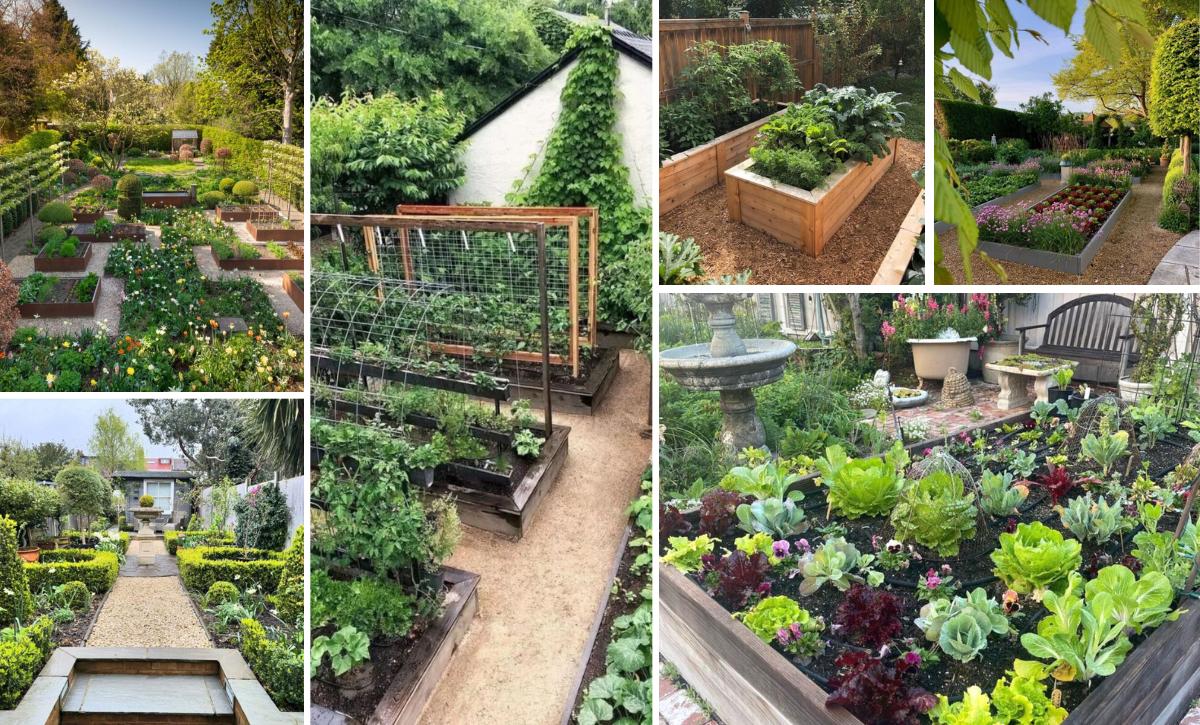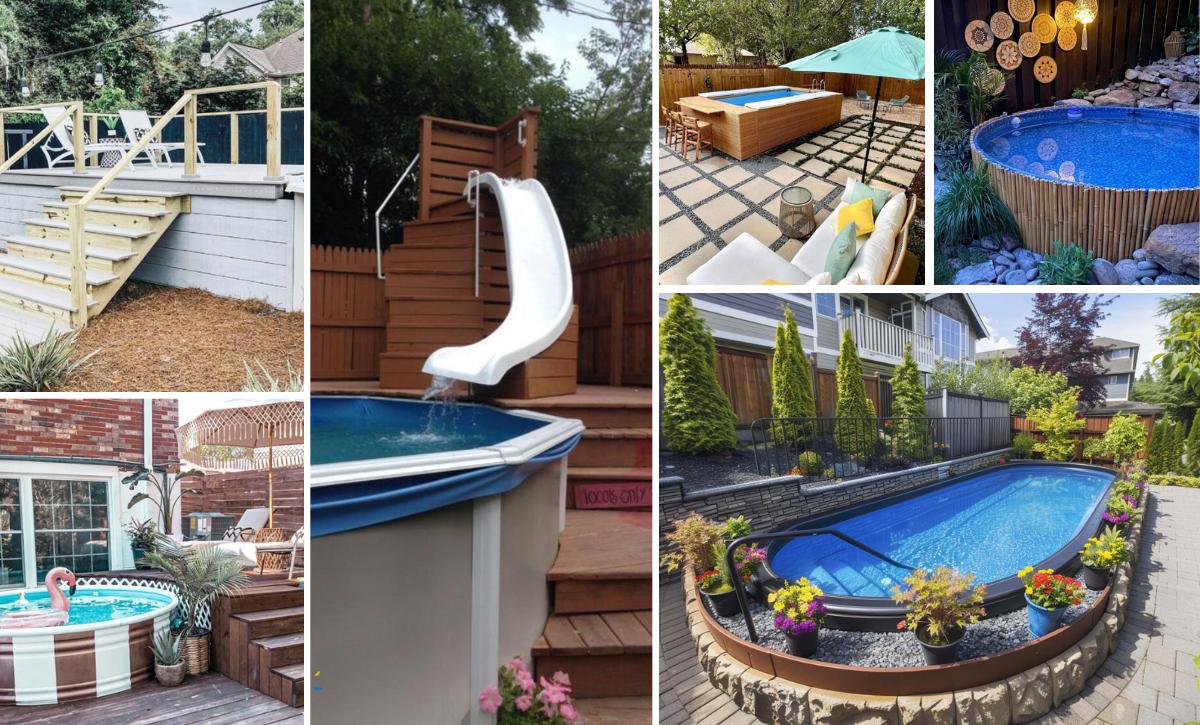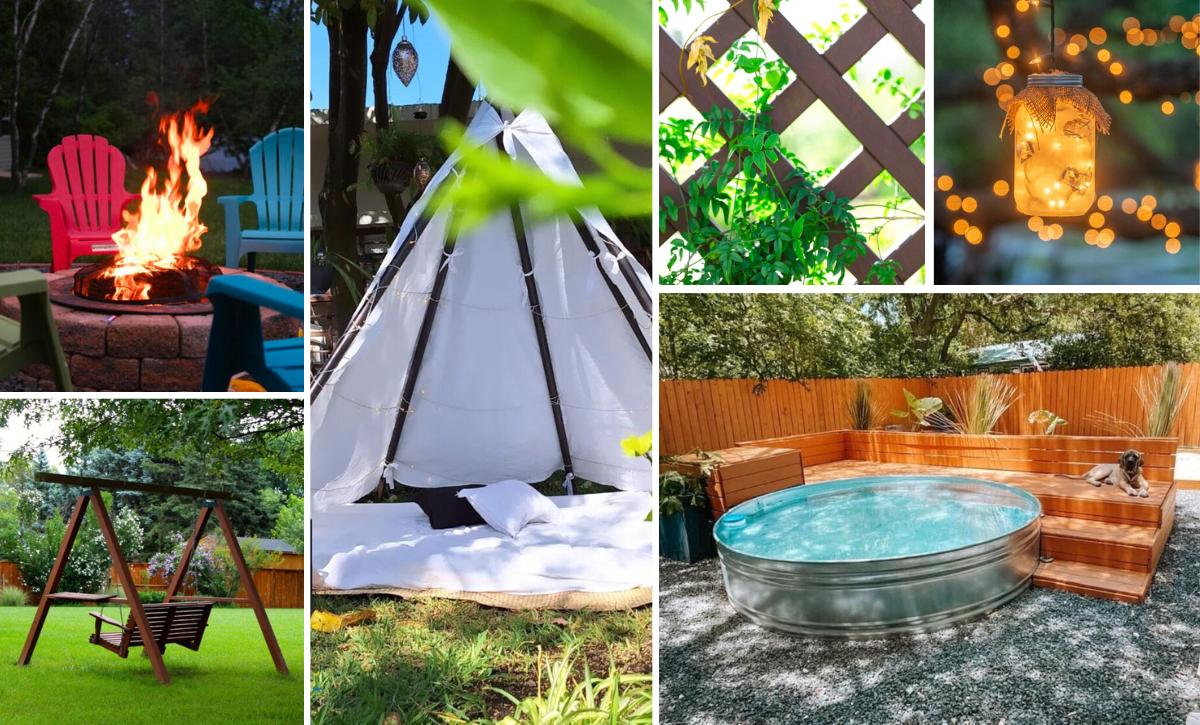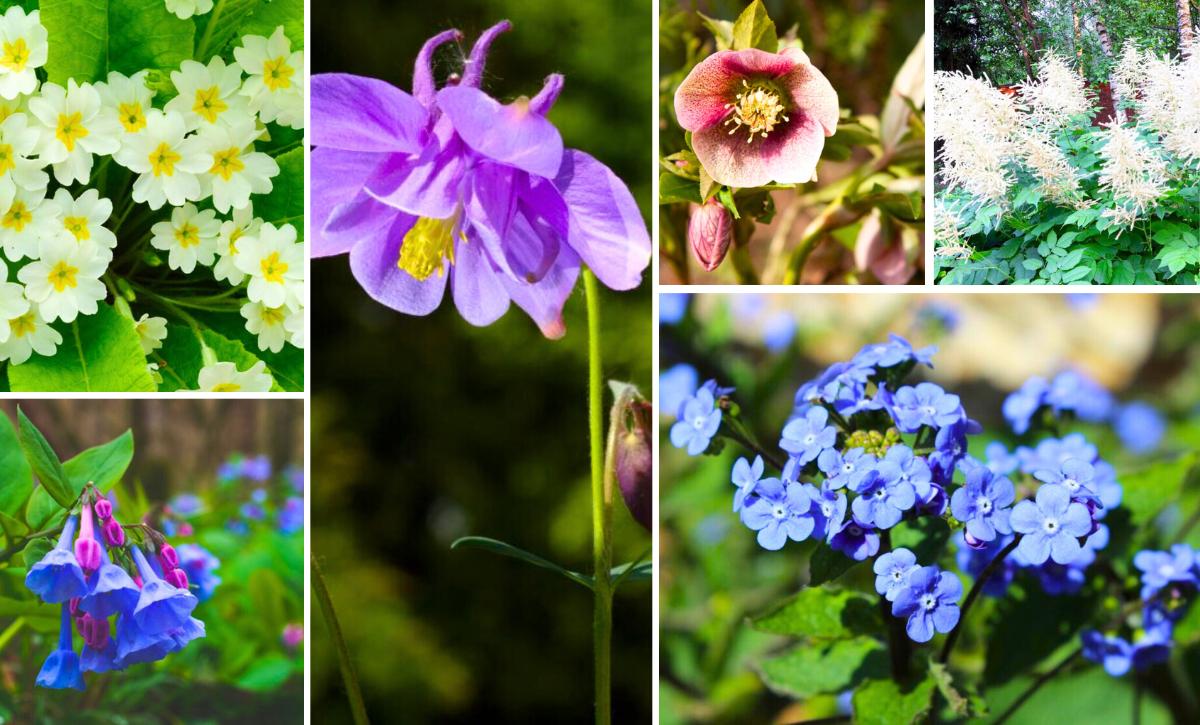One of my favorite houseplants to grow is the aloe plant. This is because it’s aesthetically pleasing and also has minimal watering requirements.
However, even though the aloe plant doesn’t need frequent watering, it can actually be underwatered. Due to their water retention ability, many think it’s impossible to underwater aloe plants.
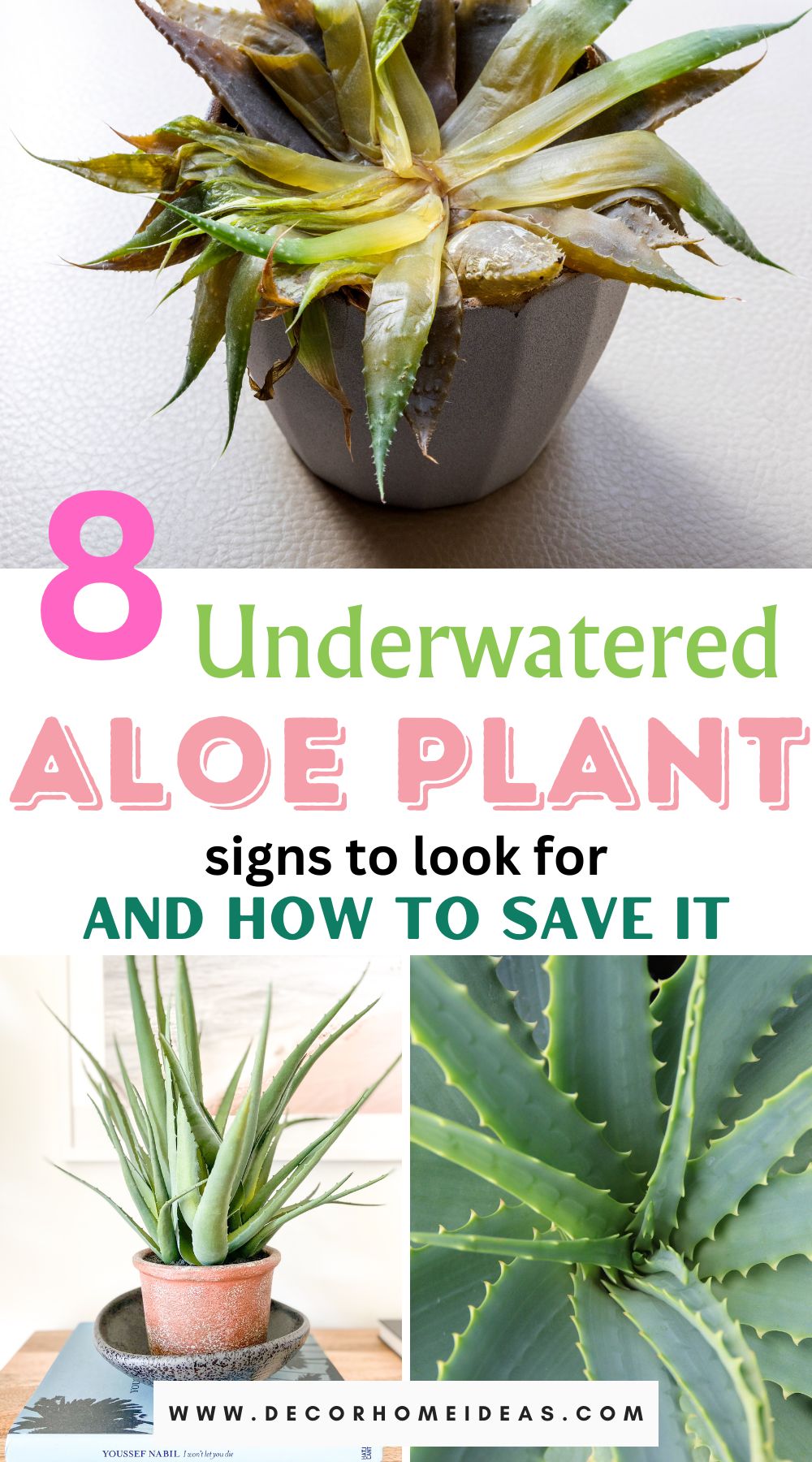
Several signs of an underwatered aloe plant include changes in the soil, leaves, and roots. If you notice any of these signs on this cacti-like succulent, you should take measures to remedy the situation.
Let’s take a look at how you can stop this from happening.
Signs of an Underwatered Aloe Plant
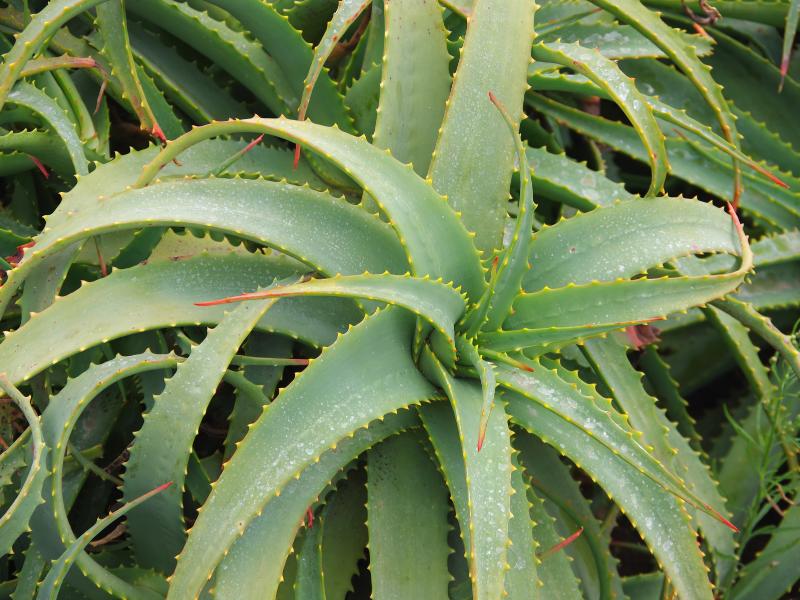
Before we understand why this plant is so, it’s essential to examine why the aloe plant becomes dehydrated. The stems of the plant have the ability to retain water for an extended period, but for how long exactly?
Over time, the water in the stems will decrease, especially if the plant isn’t watered under its regular schedule. All aloe plants are susceptible to underwatering, so monitoring watering and moisture levels is vital.
As the plant’s cells lose water, the plant’s metabolic processes and physiological functions may be damaged. This will, in turn, result in the following issues.
1. Brown Tips on Aloe Leaves
One of the leading causes of brown leaf tips in aloe plants is overfertilization. The leaves will seem like they have a sunburn. However, underwatering can also cause brown leaf tips.
Water deficiency will mainly affect leaves that are far from the stems. This is because such leaves are also farthest from the water source.
The tips of the aloe plant’s leaves are among the last to receive water, so when they turn brown, it’s a sign that the plant is underwatered.
The brown tips will then become shriveled and eventually turn brown.
In the absence of moisture, these leaf tips will likely lead to the entire leaf dying out.
2. Yellow Leaves
Yellow leaves in aloe plants are mainly indicative of nutrient deficiency. Without water, nutrients can travel to all parts of the plant. Without such nutrients, the plant will be unable to perform photosynthesis.
Underwatering will hinder several nutrients from being transported to the plant. As such, it’s challenging to determine which nutrient is missing. Once you notice yellow leaves on the plant, you should check to ensure sufficient water supply.
Older leaves turning yellow are an indication the plant needs nutrients such as Phosphorus, Natrium, Magnesium, or potassium.
On the other hand, the change of color in younger leaves often shows a lack of copper, Iron, Calcium, zinc, or magnesium.
Without these minerals, the plant can’t produce chlorophyll or photosynthesize; hence, the dark green leaves will turn yellow.
3. Dry Leaf Edges
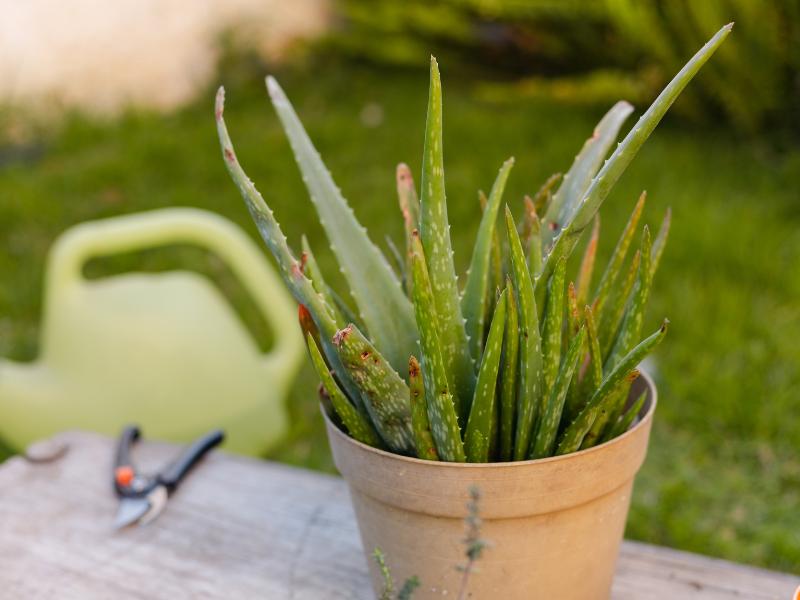
An underwatered aloe plant may exhibit dry leaf edges while the central part of the leaf is green and well moisturized.
This is because the plant is losing water, which causes the cells to die and the edges to become dry.
It’s important to note that leaf edges are generally thin and lack water. This makes it easy for them to lose moisture and dry out, becoming crisp.
4. Wilting of the Aloe plant
The lack of water for many plants will cause the leaves to wilt and appear loose. In this case, the Aloe plant will lose its beautiful crown shape.
If the plant isn’t receiving enough water in the cells, the leaves can’t hold or be firm, and over time, they will bend and start wilting.
This is one of the worst-case scenarios of underwatering since the shape of this plant is one of its best features.
5. Brown Spots on The Leaves
Brown spots can be a sign of overwatering or underwatering, but how do you tell the difference?
It’s simple! In an underwatered plant, the spots will be dry when you touch or feel them, and in an overwatered plant, the spots will be soaked.
Again, these spots result in cells dying due to lack of water.
6. Shriveling roots
The primary function of plant roots is to absorb water and minerals from the soil and transport them to the rest of the plant.
Even though signs like brown edges will be the first indication of an underwatered aloe, the roots are the first part of the plant to get affected.
In an underwatered plant, the roots will try and find any water source to replenish the plant. The soil in the pot will dry out as dehydration continues, and the roots will become shriveled.
Rehydrate your Aloe plant if you notice the roots are dry to the touch.
7. Dry Potting Soil
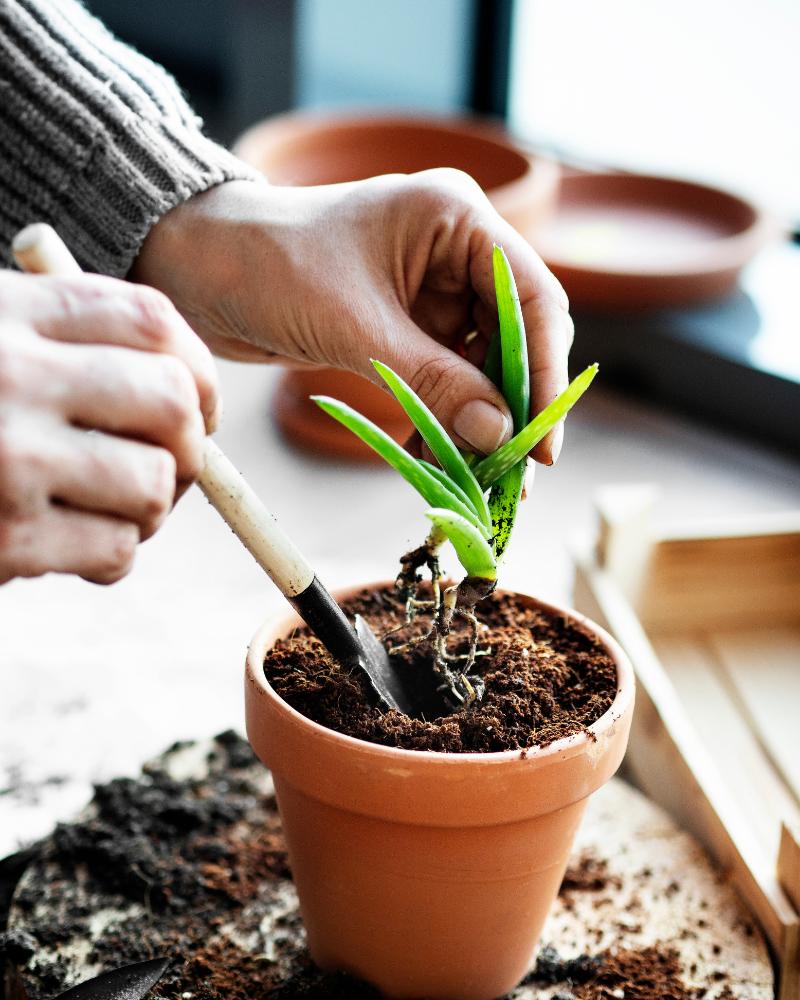
Obviously, dry soil is a clear indication of an underwatered aloe plant. However, don’t confuse dry soil with soil ready for watering.
In a dehydrated plant, dry soil will completely dry from top to bottom, while the soil mix ready for watering will only be dry on the upper part.
You must follow the proper watering schedule for the plant, as moisture is crucial for water retention on the plant’s spores.
The type of soiling mix you are going to use is one of the key factors to consider when watering the plant.
Different soil mixes will have different watering needs and requirements. For example, a plant growing in sandy soil will dehydrate faster than one growing in clay soil.
Despite the different water retention rates of the soils, it’s important to note that each one has a limit.
Failing to water the plant even after water has dried up from the soil will result in the plant permanently wilting.
8. Curly Leaves
Leaf curling is a tactic used by plants to improve water retention once the plant starts dehydrating.
A high transpiration rate will cause the aloe plant to minimize water loss by curling the leaves and reducing their size.
Curling reduces the leaf’s surface area and causes the stomatal pores to shrink; hence, it’s a vital mechanism the plant uses to fight water deficiency.
If the plant isn’t watered for long, the leaves will not only curl but could also dry completely.
As such, never ignore the signs that the plant is dehydrated, as this could lead to additional problems and the destruction of cells, after which it will be impossible to revive the plant.
Overwatering Vs Underwatering
Underwatering and overwatering can be confusing regarding plant care, mainly because there are similar signs. As such, paying close attention to the plant is essential to know what you are dealing with.
Watering is a crucial part of plant care. While the aloe plant requires less watering, it shouldn’t be left to go for long periods without watering.
Check the signs it exhibits to know if the plant is underwatered or overwatered. Here is a table on how you can tell the differences.
| Overwatered Aloe Plant | Underwatered Aloe Plant | |
| Leaves | Yellow leaves | Yellow and droopy leaves |
| Soil | Unpleasant smelling, soggy soil | Dry soil |
| Roots | Black and mush roots (root rot) | Dry, shriveling |
| Spots | Water soaked and brown | Brown and dry |
| The plant | Drooping | Wilting and drooping |
Causes Of An Underwatered Aloe Vera Plant
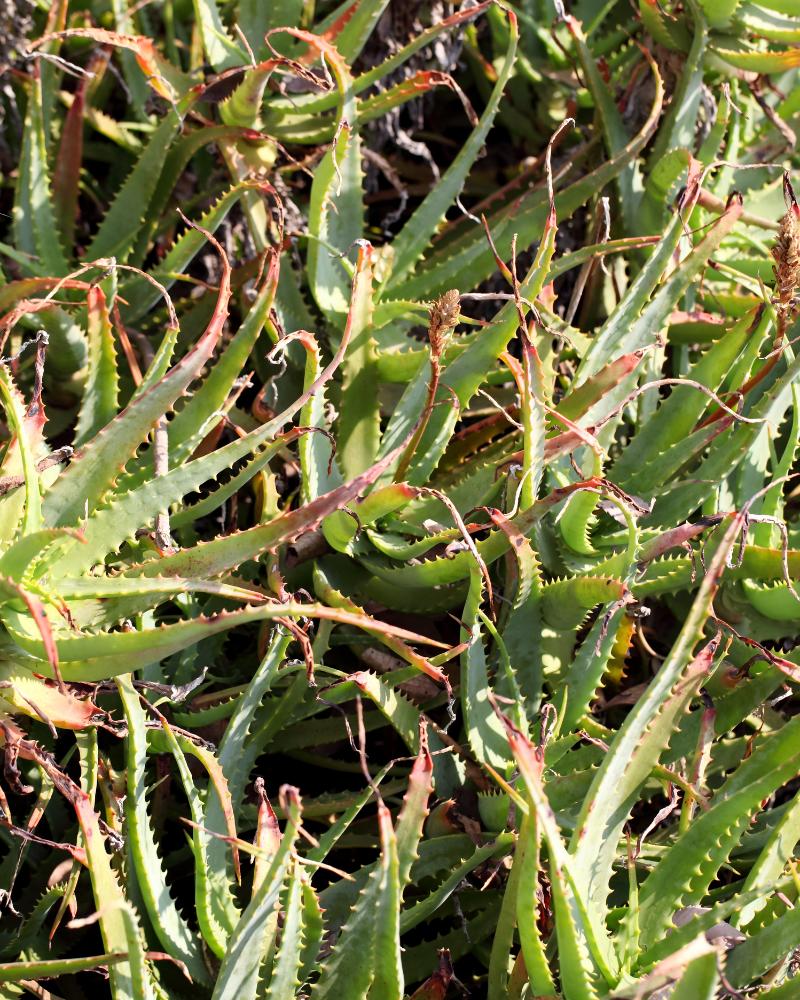
The plant isn’t watered regularly
Consistency is one of the critical factors to consider when watering the aloe plant. For plants to develop healthily, they must be supplied with enough water. However, there are two common mistakes people make when watering.
- Watering the plant prematurely
- Waiting for too long before watering.
Each plant should have a specific water schedule, so stick to the program to avoid potential issues.
Different conditions will lead to the plant losing water, so pay attention to the other growing needs of the plant.
Water evaporation rate
Transpiration is the process of water evaporating from a plant through the stomata, which are tiny pores on the surface of leaves.
Succulents like the aloe plant retain water for an extended period due to their fleshy leaves. However, the following conditions can increase the transpiration rate of the plant
- Fast winds
- Low humidity levels
- High temperatures
The soil can’t hold water
Soil mix for the aloe plant should have the capacity to hold water.
The texture is the main factor affecting the soil’s water retention capacity. So ensure you get the right potting mix before growing your aloe plant.
The perfect potting mix for succulents should consist of the following:
- Perlite
- Lava rock
- Bark
These ingredients create a well-drained mix and improve aeration by creating a porous structure.
The water holding capacity of the potting mix reduces if the structure is too coarse, creating problems even with a good watering schedule.
After selecting the right potting mix for your plant, ensure it’s well watered, or you’ll fail to meet its watering requirements, and we don’t want that.
How To Revive An Underwatered Aloe Plant
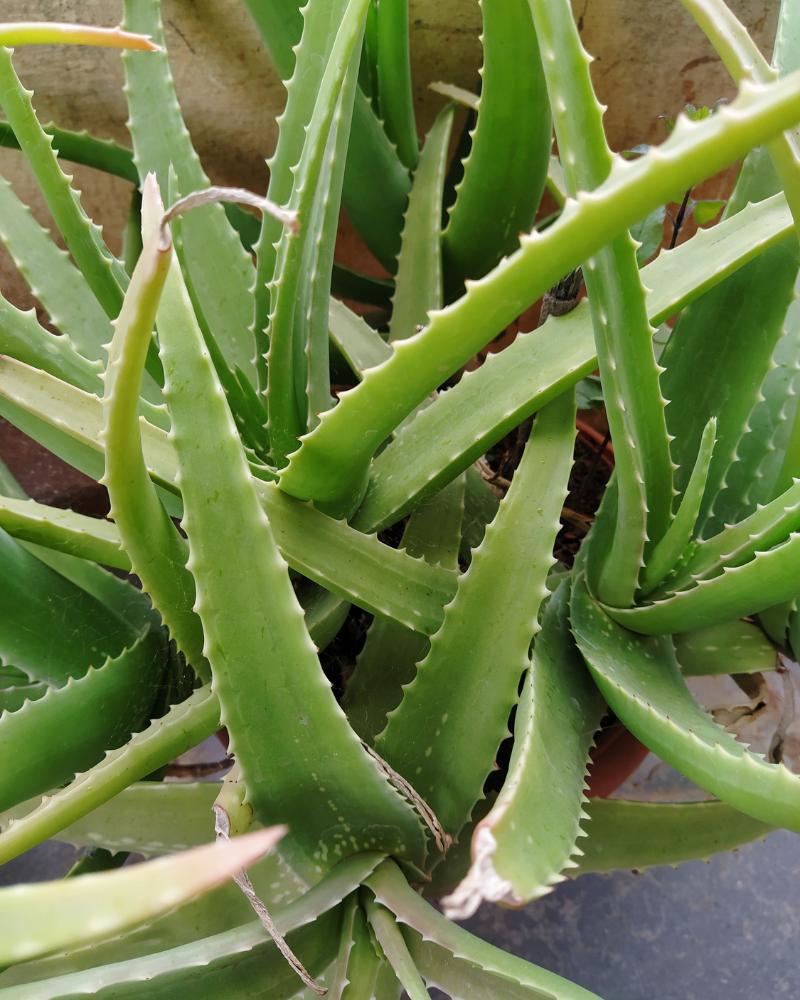
If your Aloe plant is unfortunately dehydrated, there are several methods you can use to rehydrate and revive the plant. The likelihood of the plant’s recovery will be determined by the extent of the damage.
Even though it’s not always guaranteed that revival will be successful, it’s advisable to try, and who knows, there may be a second chance for your Aloe vera plant.
If the plant has only suffered partial damage, there are good chances of the plant recovering. The severity of the plant’s dehydration is directly proportional to the amount of time it’ll take to recover. In a worst-case scenario, the plant may fail to recover, but it’s good to be optimistic.
Here are some steps to follow to help your aloe vera plant recover.
Cut Off Affected Parts
Severely damaged parts of the plant should be removed since they can’t recover and will just slow down the recovery process for the rest of the plant.
Use sterilized equipment such as pruning shears to cut off the dead leaves. Ensure you have pruned the leaves at the base.
For leaves that aren’t severely damaged, such as those with brown spots, brown tips, or brown edges, you can leave them on the plant since chances are they’ll recover.
Use New Potting Mix
To increase the plant’s recovery chances, you should repot it. Find a new pot and new potting mix that’s well drained and can hold moisture to repot the plant.
The pot you choose should have drainage holes so the excess water can drain through them.
A plant with good drainage will follow this pattern: after watering, the soil will gradually dry out between waterings. The soil will then present signs that it needs watering, such as the top part of the soil being dry.
A plant with a sound drainage system prevents the water from being waterlogged or retained in the pot, which only causes more damage to the plant.
Choose the Right Pot Size
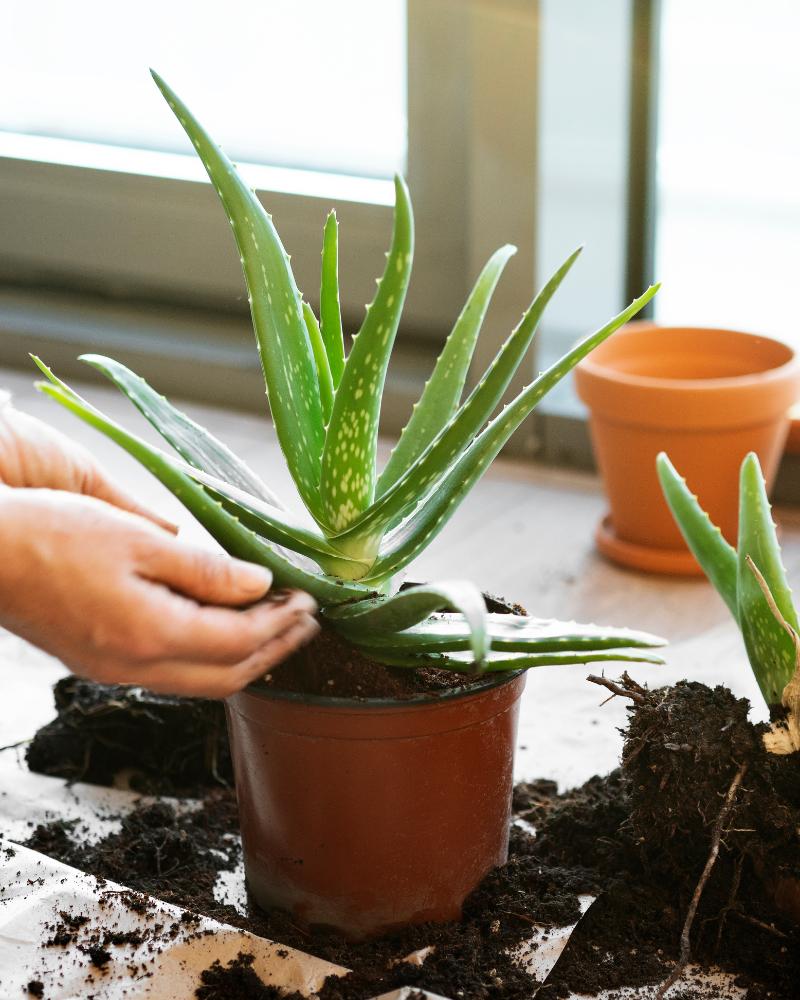
The right pot size is crucial to ensure the plant thrives.
- The pot shouldn’t be too big since excess soil in the pot will retain more water and cause the plant to be mushy or lead to root rot. More soil around the plant makes it hard for the root system to thrive.
- Ensure the pot has drainage holes: as we previously mentioned, excess water must drain out from the soil, which will only happen if the pot has drainage holes. Draining excess water prevents root rot and helps the plant thrive.
- If your plant is large, it’ll need a larger pot and more soil. In this case, you need to adjust the plant’s watering as more soil around the plant holds more water. As such, watering should be less frequent.
- It’s essential to ensure the airspace around the soil is not clogged with water, as this will prevent oxygen from reaching the roots. This could destroy the entire root system.
To prevent further complications in the plant, always replace old contaminated soil with fresh soil. If you notice any changes in the plant, you should act quickly to prevent further damage.
Find a New Place for the Aloe Vera Plant
The Aloe plant is one of the most aesthetically pleasing plants, and even though you may have placed it in a place where it can show its beauty, there may be better environments for thriving.
One of the critical factors to consider when choosing a place for the plant is light. Aloe vera plants don’t like direct sunlight since it may cause sunburns, damage the leaves, and dry out the soil.
The plant will thrive in indirect sunlight, so choose a place with plenty of indirect sunlight. This can be near a window or balcony with plenty of fresh air and indirect sunlight.
Moreover, the plant shouldn’t be placed in a room with low light since this could damage the drainage system. In this case, you’ll have to move the plant to a brighter and warmer place.
Sufficient indirect sunlight allows the water to drain effectively between waterings.
Adjust Watering
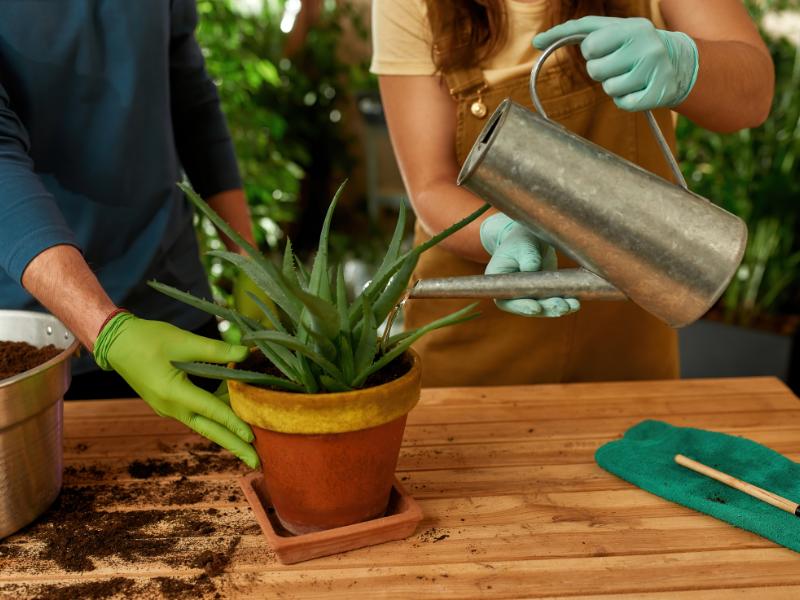
Before watering your plant:
- Check the soil moisture using a wooden stick, a moisture meter, or your finger.
- Use the regular watering schedule for other houseplants, and avoid sinks, bathtubs, and other areas where there is a risk of excess watering.
- Water the plant with filtered water or water left overnight; this ensures excess chemicals that could harm the plant evaporate from the water.
- When watering, ensure the leaves don’t come into contact with the water. You can use several methods, such as over the top of the soil or bottom watering. Carefully water the plant to reduce either underwatering or overwatering.
- Watering should be adjusted during different seasons. For example, the plant will need less watering during the cold winter months than in summer. Regardless of the season, always check the moisture levels before watering.
- When watering over the top, don’t soak the plant. Instead, water it until it reaches approximately 2 inches below. You can also apply bottom watering, which is much easier.
- The plant should be watered gradually until the soil soaks properly rather than pouring large amounts of water at once.
Watering Schedule
Succulents like aloe vera take more time to dry out than other houseplants, so it’s essential to ensure the plant is sufficiently watered.
The watering schedule for a plant depends on several factors, such as the size of the plant, the season, the material of the pot, and the plant’s location.
In warmer seasons, the watering frequency will increase due to the fast evaporation rate of the moisture.
During the winter or cold seasons, watering should be less frequent. However, always check on the soil moisture levels to avoid underwatering or overwatering the plant.
As for the size, the plant should always be supplied with more water as it matures. Young plants will need less water, and mature ones will need more water.
The pot material also matters as plastic pots retain moisture longer than clay pots.
Lastly, outdoor Aloe plants will need more water than indoor plants, where it’s easy to control the conditions.
48 Hour Rule
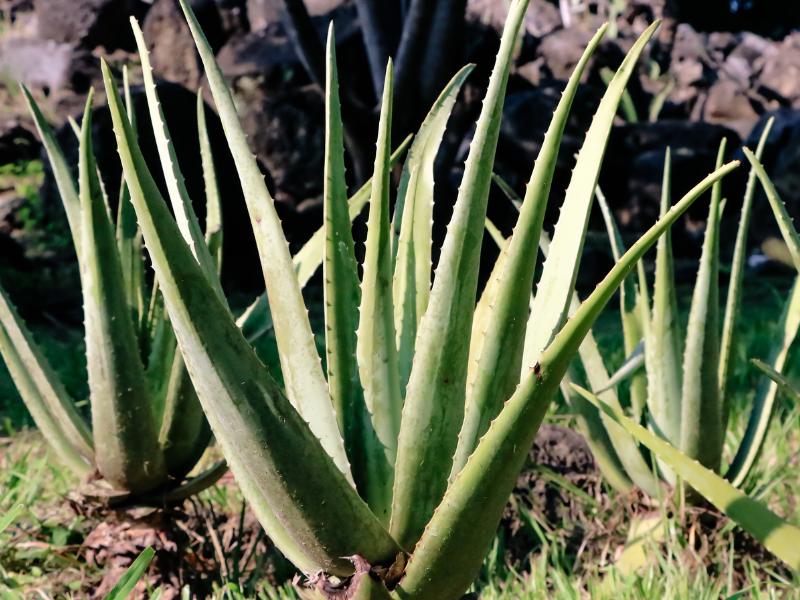
This is one of the quickest and most efficient ways of reviving the aloe vera plant if the plant hasn’t suffered much damage.
Fill a glass or bowl with purified water, immerse the plant’s roots, and wait about two days (48 hours).
Check the plant to see if there’s any improvement once the 48 hours have passed.
If you notice the leaves turning green, it’s time to repot the plant to its new home.
Wrapping Up
Losing something is never easy, especially if this was a beloved plant that you took your time to plant and care for.
There are many signs of an underwatered Aloe vera plant, and this article highlights the main ones.
Now that you know what to look for in your plant, you can quickly determine when it’s dehydrated and use several methods to revive or fix it.
It’s never too late to try and fix your beloved Aloe! With the methods discussed here, your plant will rejuvenate quickly!


